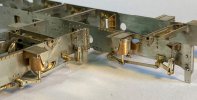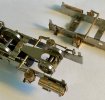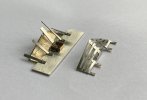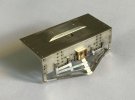John Baker
Western Thunderer
Your work is amazing! Quite superb fidelity, and eye for detail.




There's still time - I will keep my fingers crossed for you.I see that even the handbrake screws appear to have the correct thread form!!!
If only I had won the lottery..........
Thanks very much!What all the others said plus 10. Very inspiring with a touch of intimidation! Do you have a source for all those bolts, rivets and miniature screws, or do you make everything from scratch?
Hi Andrew,It is all very clean. Are you a resistance solderer? Or are you good at scraping off.?
And it is all 'clean of line'. You are skilled.
